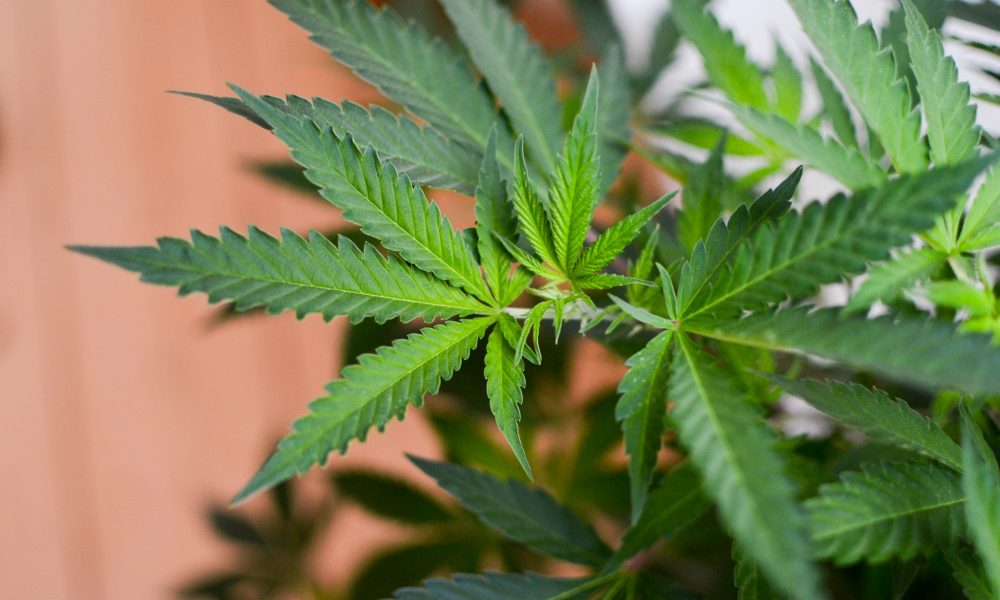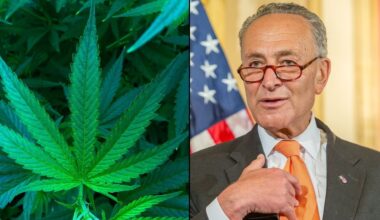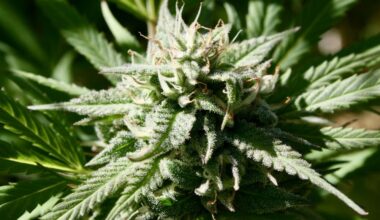The governor of New York says her administration is creating a $200 million public-private fund to specifically help promote social equity in the state’s burgeoning marijuana market.
Gov. Kathy Hochul (D) released an extensive State of the State book on Wednesday, detailing policies she will pursue in 2022—and promoting equity and economic justice in the cannabis industry is one of those objectives. The document also discusses efforts to support broader harm reduction drug policies and the state’s hemp market.
The governor said that while marijuana business licenses have yet to be approved since legalization was signed into law last year, the market stands to generate billions of dollars, and it’s important to “create opportunities for all New Yorkers, particularly those from historically marginalized communities.”
“In support of that goal, Governor Hochul will create a $200 million public-private fund to support social equity applicants as they plan for and build out their businesses,” the document says. “Licensing fees and tax revenue will seed the fund and leverage significant private investment.”
Let us seize this moment with great confidence and optimism, and create a legacy of accomplishment that will endure through the ages: A New Era for New York. pic.twitter.com/RDasv4OxBC
— Kathy Hochul (@GovKathyHochul) January 5, 2022
“While New York has committed to making its cannabis industry more equitable, this action will put that commitment into practice. New York will lead where many other states have fallen short,” it continues. “The governor is focused on providing more than basic business supports and training for our future cannabis entrepreneurs, and this fund will provide direct capital and startup financing to social equity applicants as the State takes meaningful steps to ensuring that New York’s cannabis industry is the most diverse and inclusive in the nation.”
New York has a goal of issuing at least 50 percent of cannabis business licenses to social equity applicants, including people from communities disproportionately impacted by criminalization, distressed farmers and women- and veterans-owned companies. Hochul says the newly announced fund will help New York achieve that goal.
“Together these actions will help ensure that as New York’s cannabis industry thrives in the year ahead, more New Yorkers can reap the rewards,” the book says.
With respect to hemp, the administration talked about how the state agriculture department has developed “program regulations to add clarity and certainty for hemp growers, and added program staff to better serve the regulated community.” Regulators will also support compliance with federal requirements on hemp sampling and testing by “training and certifying private sampling agents to take regulatory samples, ensuring compliance with the federal standard for hemp of not more than 0.3 percent THC.”
The administration also announced that it will be forming a working group comprised of state, federal and industry stakeholders who will focus on “workforce development and training needs, sampling and testing, and research and market opportunities” for hemp grain and fiber.
New York will also be creating a new Division of Harm Reduction within the Office of Addiction Services and Supports in order to “develop and incorporate harm reduction principles and strategies. That includes expanding access to naloxone and buprenorphine, investing in fentanyl test strips, promoting public education and increasing the availability of sterile syringes.
While the document doesn’t explicitly mention safe consumption sites where people could use currently illicit drugs in a medically supervised environment, New York City did recently become the first jurisdiction in the U.S. to sanction such services—and health officials say they’re already saving lives.
Meanwhile, advocates and stakeholders are eager to see the implementation of legal marijuana sales in the state. A deadline for local municipalities to opt out of allowing cannabis retailers and social consumption facilities to operate in their area recently passed, and hundreds of cities, towns and villages across the state have agreed to allow them.
Because the implementation process to allow retailers has been drawn out, one GOP senator said he wanted to give local jurisdictions another year to decide whether they will opt out of allowing marijuana businesses to operate in their area—a proposal that advocates said was unnecessary and would create undue complications for the industry. It did not advance in the legislature.
As the state prepares to launch the first retail marijuana shops, the law signed by former Gov. Andrew Cuomo (D) already permits adults 21 and older to possess and publicly consume cannabis. And other lawmakers are working to build upon the legalization policy.
For example, a New York senator filed a bill last month to make it so that gay, lesbian and bisexual people can qualify as social equity applicants under the state’s marijuana law.
Sen. Jeremy Cooney (D) introduced the legislation, shortly after filing a separate bill to include transgender and non-binary people in the cannabis social equity program. He’s also behind other recent marijuana reform proposals related to cannabis business tax benefits and licensing.
—
Marijuana Moment is already tracking more than 800 cannabis, psychedelics and drug policy bills in state legislatures and Congress this year. Patreon supporters pledging at least $25/month get access to our interactive maps, charts and hearing calendar so they don’t miss any developments.![]()
Learn more about our marijuana bill tracker and become a supporter on Patreon to get access.
—
In July, Cooney filed a bill to create a provisional marijuana licensing category so that farmers could begin cultivating and selling cannabis ahead of the formal rollout of the adult-use program.
Cooney is also sponsoring a newly filed bill to allow licensed cannabis companies to deduct certain business expenses on their state tax returns.
Hochul, who replaced Cuomo after he resigned amid a sexual harassment scandal, has repeatedly emphasized her interest in efficiently implementing the legalization law.
At a recent event, she touted the fact that she had quickly made regulatory appointments that had been delayed under her predecessor. “I believe there’s thousands and thousands of jobs” that could be created in the new industry, the governor said.
Meanwhile, New York’s Cannabis Control Board (CCB) held its first meeting in October, a key step toward implementing the state’s adult-use marijuana program.
Members of the board, who were appointed by the governor and legislative leaders, announced that medical marijuana dispensaries will be allowed to sell flower cannabis products to qualified patients. The $50 registration fee for patients and caregivers was also permanently waived.
In November, regulators also approved rules for the state’s cannabinoid hemp program, notably clarifying that flower from the crop can be sold but delta-8 THC products are currently prohibited from being marketed.
The state comptroller recently projected that New York stands to eventually generate $245 million in annual marijuana revenue, which they say will help offset losses from declining tobacco sales.
For the first year of cannabis sales, the state is expected to see just $20 million in tax and fee collections. That will be part of an estimated $26.7 billion in new revenues that New York is expected to generate in fiscal year 2021-2022 under a budget that the legislature passed in April.
The state Department of Labor separately announced in recent guidance that New York employers are no longer allowed to drug test most workers for marijuana.
Meanwhile, a New York lawmaker introduced a bill in June that would require the state to establish an institute to research the therapeutic potential of psychedelics.
Another state legislator filed legislation last month to legalize psilocybin mushrooms for medical purposes and establish facilities where the psychedelic could be grown and administered to patients.
Medical Disclaimer:
The information provided in these blog posts is intended for general informational and educational purposes only. It is not a substitute for professional medical advice, diagnosis, or treatment. Always seek the advice of your physician or other qualified healthcare provider with any questions you may have regarding a medical condition. The use of any information provided in these blog posts is solely at your own risk. The authors and the website do not recommend or endorse any specific products, treatments, or procedures mentioned. Reliance on any information in these blog posts is solely at your own discretion.






